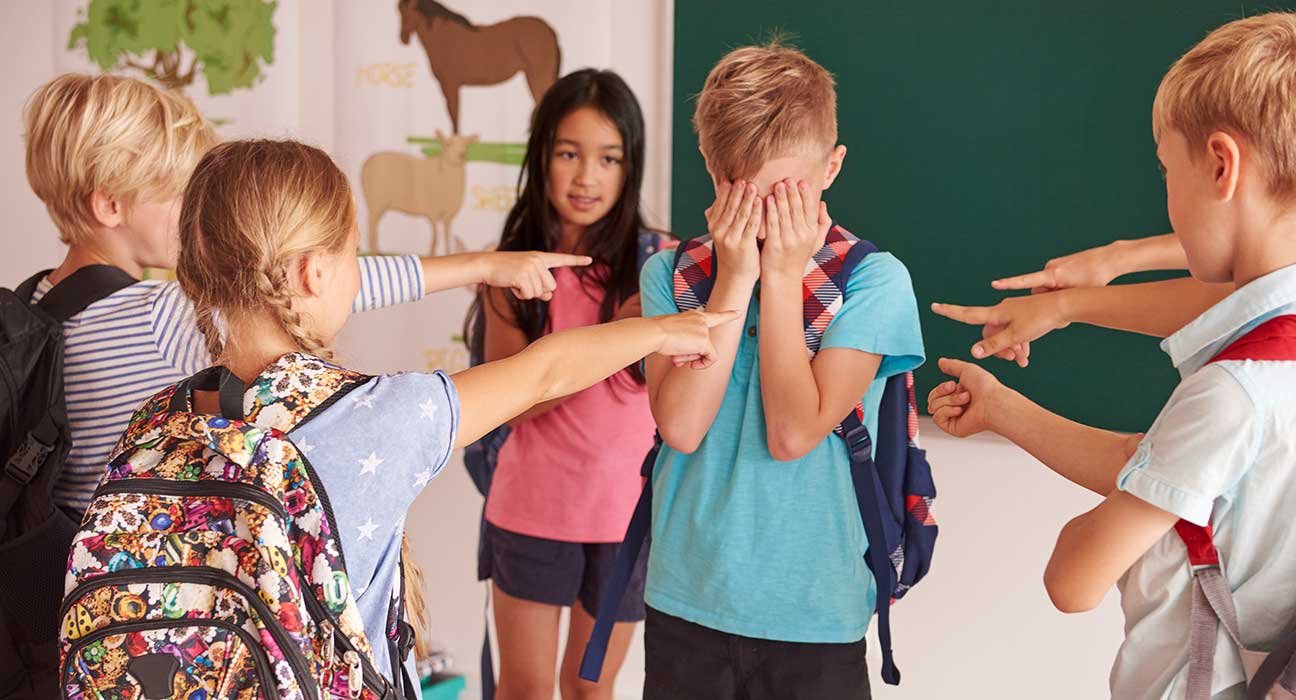Bullying is something when someone treats anyone in a very unkind manner. This consists of behavior intended to harm, intimidate, and tries to dominate other people and this behavior can take various forms from verbal to physical. It can happen in various settings and it deeply affects the victims mentally. The activity of some students bullying others by calling them names, punching or kicking them, spreading rumors, or even being mean online is highly common in school and college environments. Students may experience bullying due to differences in appearance, speaking a different language, being popular, or excelling in academics. Teachers are the first adults to notice the signs of bullying and it is their responsibility to prevent this initially.
Signs of being bullied
- Physical Signs– These include unexpected bruises, scratches, torn clothes, missing or damaged belongings, feeling sick or faking illness.
- Behavioral Signs– Avoiding schools and activities, becoming withdrawn or anxious, difficulty concentrating in school.
- Emotional Signs– Feeling sad, lonely, or hopeless, having low self-esteem, and feeling afraid.
- Social Signs– Exclusion from social activities, teasing, name-calling, spreading rumors about them, and targeting with jokes or pranks.
- Academic Signs– Declining grades or loss of interest in schoolwork, difficulty concentrating in class.
It is important to talk about their situation privately and tell them how to tackle the situation.
Teachers’ Role
A teacher’s role is one of the most crucial parts in tackling any kind of ill behavior. Teachers play a role, in establishing a secure atmosphere, thereby reducing the likelihood of bullying incidents.
Identification and Intervention:
Teachers are often the ones who notice the signs of bullying initially. It includes identifying the changes in the physical, emotional, and social behavior of the student. Specific training might help teachers identify the early signs and help the student to combat the situation initially. Early actions, such as informing parents, notifying school staff, and offering counseling, should be implemented to provide support for the child.
Supporting Classroom Environment:
Teachers should create a friendly and supportive environment in the classrooms by teaching topics like empathy, kindness, respect, etc. Teachers and staff should work on building a classroom culture where bullying is less likely to occur and prevent it.
Education and Awareness:
Teachers should educate their students about the impacts of bullying on others, which can be achieved through activities, like role-playing and seminars. And raising awareness will enhance a feeling of respect in every student. We should teach the significance of empathy to compel them to speak up if they witness someone being bullied.
Setting Classroom rules
Teachers should take appropriate actions prior, it must include making student-friendly rules which will help to create a positive environment. This involves explicitly stating that bullying is unacceptable and will not be tolerated. Rules should be rigorously enforced, and students should think twice before engaging in any bullying behavior.
Anti-Bullying Programmes
In order to raise awareness, several schools provide anti-bullying campaigns as extracurricular activities. Teachers and students can actively participate in the discussions, organize events, and spread messages to reduce bullying.
Supporting Victims and Bullies
The teacher provides support to the victims by listening to him/ her. Victims of bullying seek emotional support and direction to recover from the damage it causes, while bullies frequently require assistance in dealing with the underlying problems that motivate their behavior. Teachers can work with counselors and parents to provide appropriate support and interventions for all students involved.
Leading by Example
Teachers are powerful role models for their students. By demonstrating kindness, empathy, and respectful behavior, they set an example for how students should interact with one another. When teachers model positive behavior, students are more likely to follow suit.
Tips to talk to a bullied Child
- Find a place where you can have a conversation, with them. This will give the student the confidence to stand up against bullying.
- Let him know that you listening and show that you care
- Be patient, give them enough time to open up
- Inquire if they are facing any instances of bullying.
- If yes, let them elaborate on the event
- Help them to give validation to their feeling
- Ensure that they comprehend that the situation is not their responsibility.
- Let them know that you will help them
- Develop plans for how to deal with this with bullying.
Remember that, bullying is a very serious issue, it might leave a traumatic impact on a child’s mind physically and emotionally. Identifying, supporting, and educating can make a significant in preventing bullying and creating a healthy, positive, and supportive environment. Take all the important actions that can work to stop the bullying and create a safe and supportive environment for all children.
Read more – Cyberbullying and its Impact on the Mental Health of Youth













Leave feedback about this